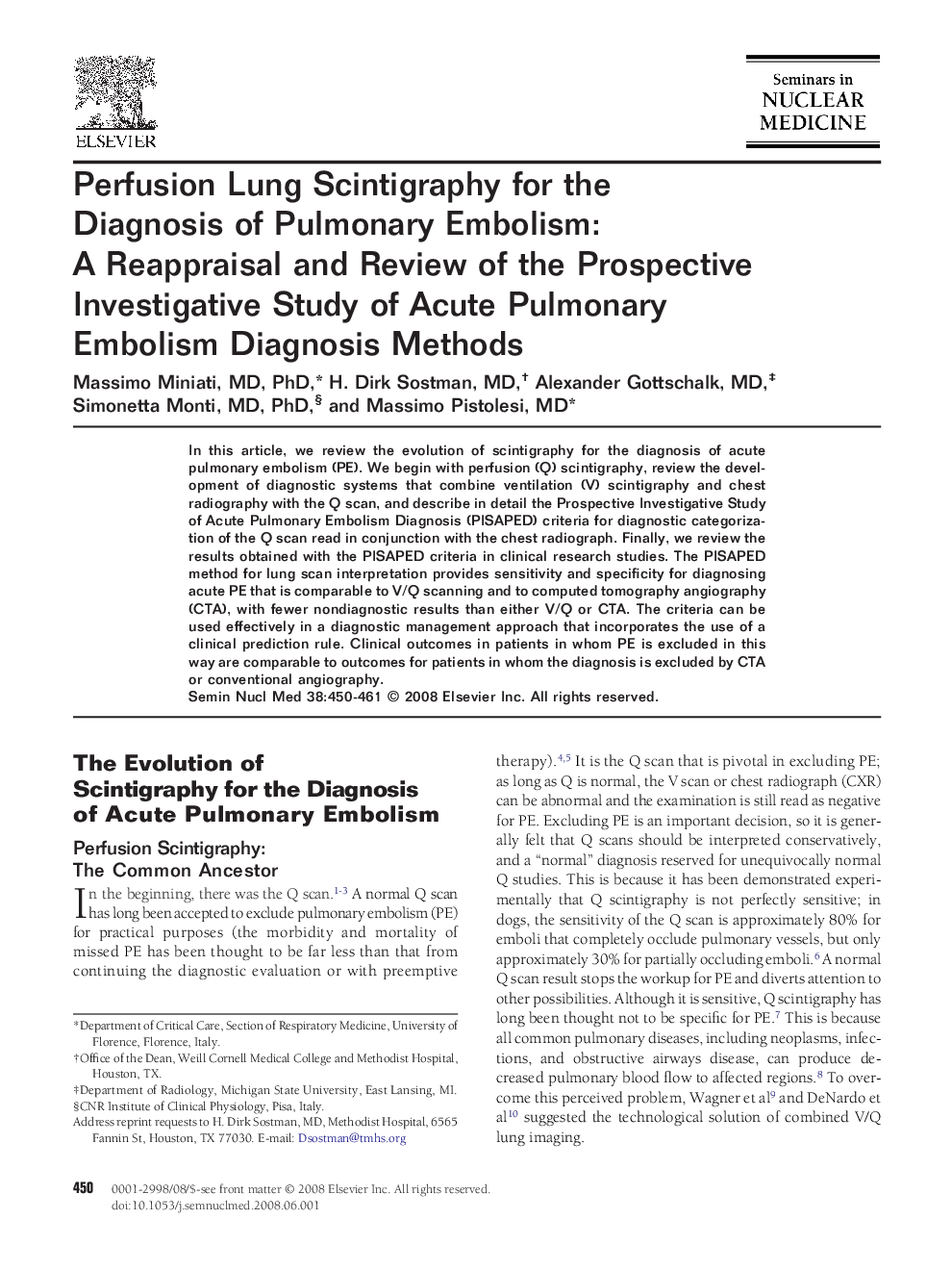| Article ID | Journal | Published Year | Pages | File Type |
|---|---|---|---|---|
| 4251223 | Seminars in Nuclear Medicine | 2008 | 12 Pages |
In this article, we review the evolution of scintigraphy for the diagnosis of acute pulmonary embolism (PE). We begin with perfusion (Q) scintigraphy, review the development of diagnostic systems that combine ventilation (V) scintigraphy and chest radiography with the Q scan, and describe in detail the Prospective Investigative Study of Acute Pulmonary Embolism Diagnosis (PISAPED) criteria for diagnostic categorization of the Q scan read in conjunction with the chest radiograph. Finally, we review the results obtained with the PISAPED criteria in clinical research studies. The PISAPED method for lung scan interpretation provides sensitivity and specificity for diagnosing acute PE that is comparable to V/Q scanning and to computed tomography angiography (CTA), with fewer nondiagnostic results than either V/Q or CTA. The criteria can be used effectively in a diagnostic management approach that incorporates the use of a clinical prediction rule. Clinical outcomes in patients in whom PE is excluded in this way are comparable to outcomes for patients in whom the diagnosis is excluded by CTA or conventional angiography.
